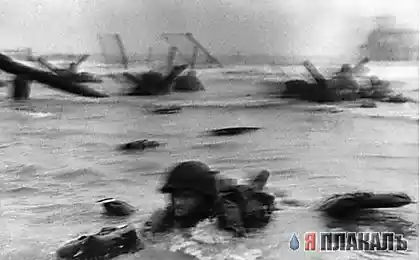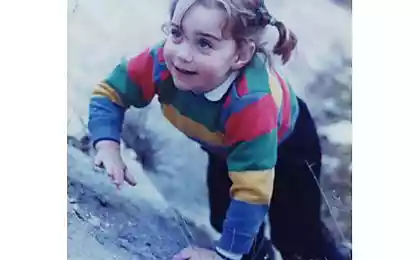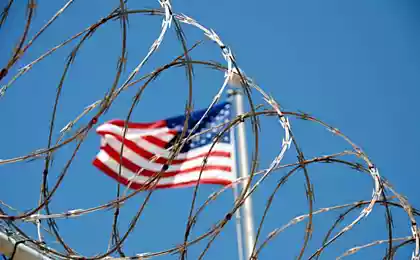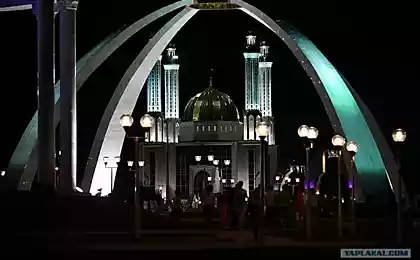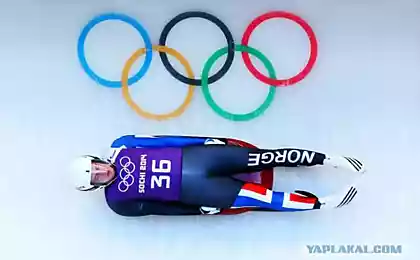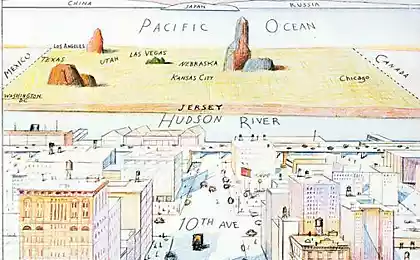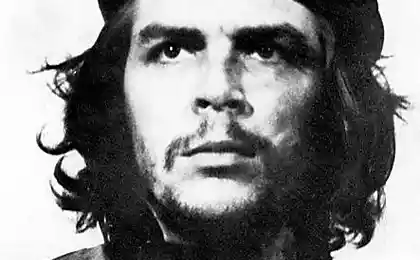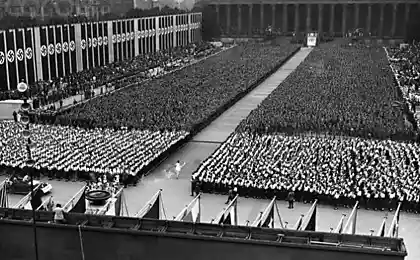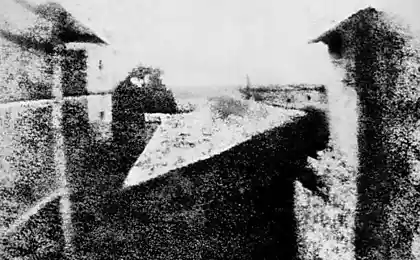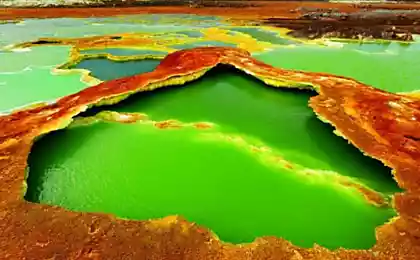1079
The most expensive Olympics in history (61 photos)
After a week in Sochi formal and, most likely, very solemnly opened the XXII Winter Olympic Games. Russia came to organizing sports events very seriously, a total ease, according to official data, investing in the city and its surroundings astronomical sum of $ 44 billion. Onliner.by learned what they were spent, and once again proved that the Russian - generous soul, which is easy to measure the common yardstick.

Of the total budget of the Olympics construction costs actual Olympic venues, which, in general, in the public consciousness and become the face of the Games amounted to a relatively modest 214 billion Russian rubles (about $ 6, 3 billion). All sports and much of the infrastructure facilities are located in two so-called clusters - coastal and mountain. Coastal, as the name implies, is located on the Black Sea, in Adler, in the Imereti Valley. Until 2007, the area was occupied by private houses and fields languish tea farm "Russia».
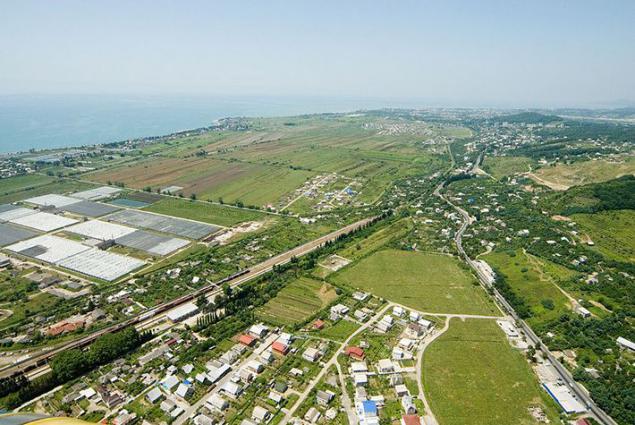
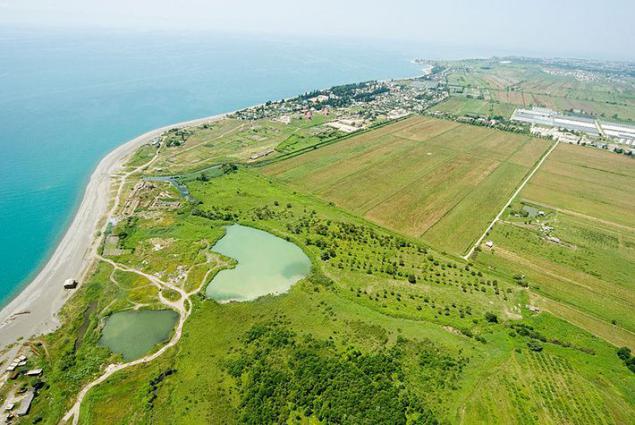
Environmentalists opposed the construction of Olympic venues is in the area, claiming that there is a unique for the Russian region "Colchis swamps" where with great pleasure nesting rare birds, crawling Scorpion Italian, floating relic Colchis marsh turtle and happily grow such reasonably interesting plants like Osmunda regalis and Imperata cylindrica. Unfortunately, public interest turned out to be more important than the interests of the majestic relic osmunda and turtles, and in 2009, right in the swamp boiled Colchic building. So unique swamp turned into a coastal cluster.
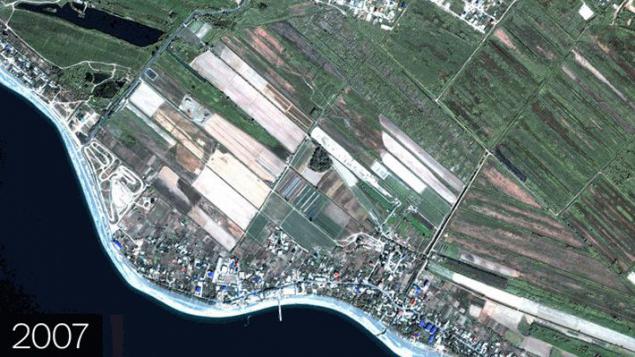
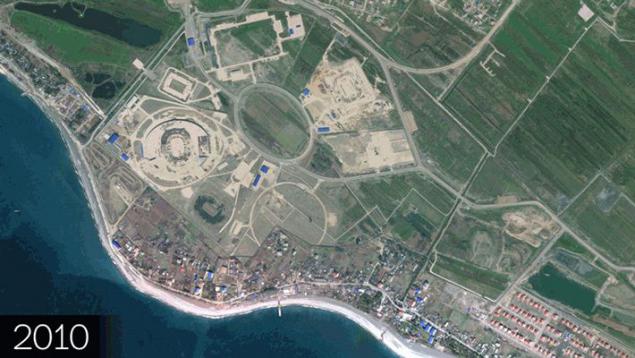
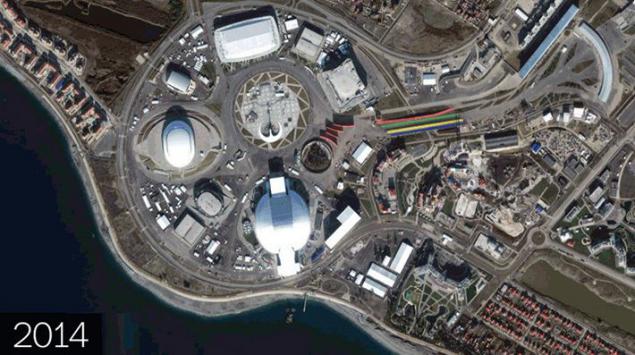
Consider the Coastal Cluster device details. Its main element is the Olympic Park - a complex arranged in a circle with a round sports arenas area of Medal Plaza in the center. The main objects of the cluster subscribe to the figure.

Since the Olympic Park complex looks now.
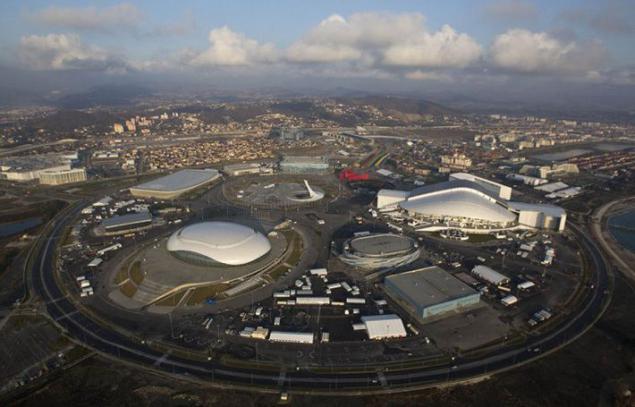


Architectural symbols of the Games, according to the organizers, the Olympic Stadium became "Fischt." In addition to the function of metaphysical character, special sports load this facility shall not be - it will be used exclusively for the ceremonial opening and closing ceremonies of the Olympics. Several strange at first glance, the title is simple: Fischt - one of the mountains of the Greater Caucasus mountain range, "White head" translated from Adygei.

That mountain, according to the authors of the building of the institute "Mosproject-4" and the British bureau Populous, should resemble the silhouette of the arena that can accommodate up to 40 thousand. Viewers. Snow-white translucent polycarbonate roof characteristic form really looks like the broken mountain top.
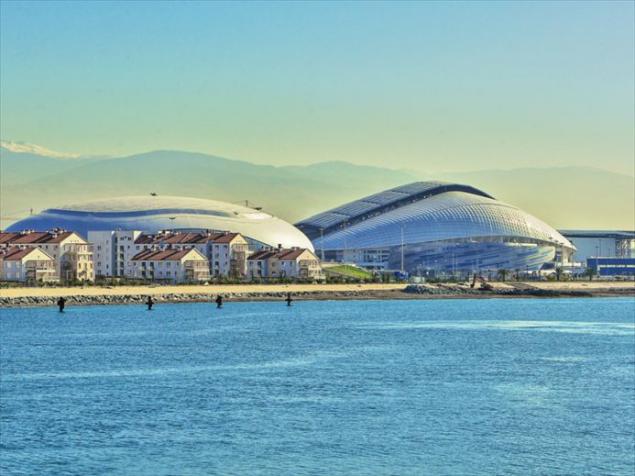
However, realized as a result of the building to get a little less impressive than anticipated at the design stage. The stadium was covered with a roof, and its ends were unattractive outbuildings. Arena cost the Russian budget of $ 770 million - an amount many times greater than the original estimates, the money fi given exclusively ceremonial function of the stadium. However, after the Olympics, it will be transformed into a football arena and, among other things, take the game of the World Cup in 2018.
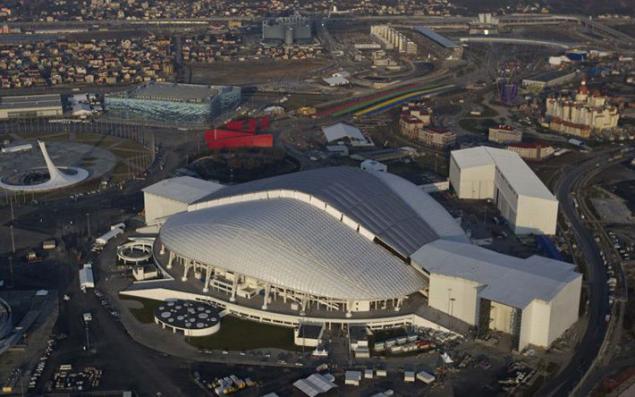
"Fischt" built on the site of the former village of Old Believers Morlinsky. The old village cemetery, became the focus of built-up area of the Olympic Park, had to save, fenced it to the games masking decorative design.

The second most important object of the Games - Grand Ice Palace - named with far less fiction - "Large". Spectacular pearl white dome, designed by Russian specialists from the NGO "Mostovik", no longer resembles the mountain, and not a drop, not the half of the egg, not the opera house in Beijing.
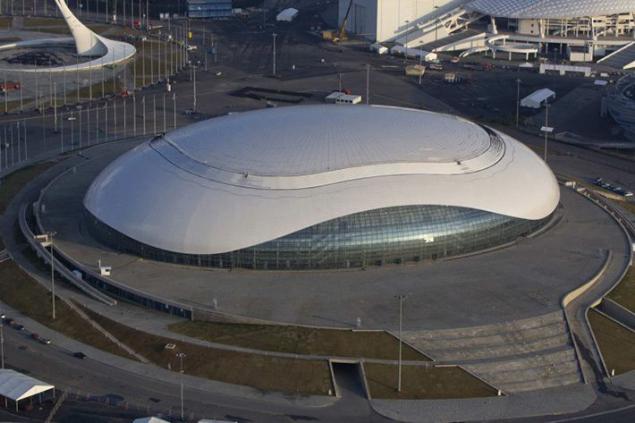
The roof of the "big" special mounted LEDs, allowing it to turn into a huge screen. Holds palace, where games will be played hockey tournament, 12 thousand. Viewers. After the completion of the construction of the Olympic Games, which cost about $ 300 million, will be used for its intended purpose. In the end, why not play hockey on the ice even in the subtropics.
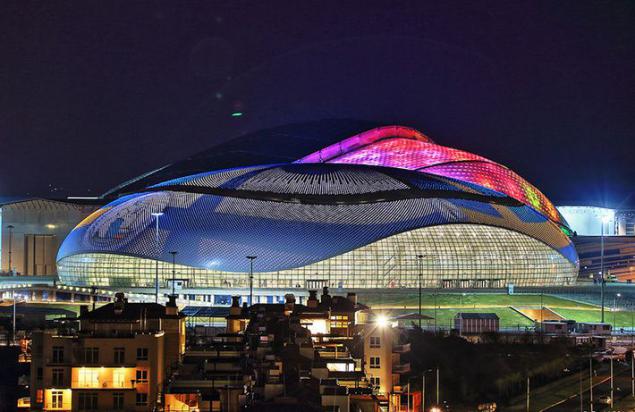
Second ice palace of Sochi 2014 - Small - called "puck", although only vaguely similar to the puck. The oval design of the facade is lined with decorative blue-gray panels forming an abstract pattern on one side and the other spiral, which should, according to the authors of TsNIIPromzdany, reminiscent of the "blizzard." "Puck" - a rare Olympic facility, which was built by a private investor exclusively at his own expense. Perhaps, therefore, 7000th Arena cost much cheaper "big". According to various estimates, the billionaire Iskander Makhmudov and Ural Mining and Metallurgical Company spent on the construction of the stadium about $ 100 million.
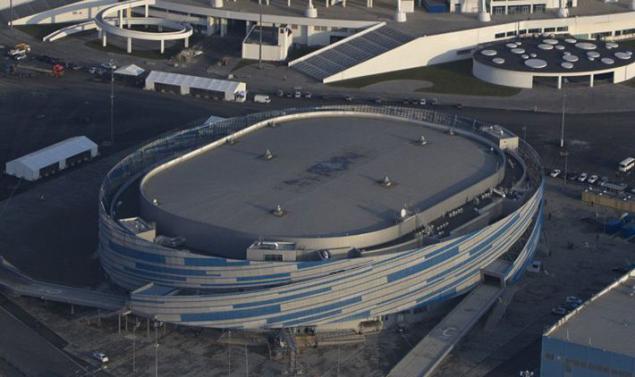
Of course, the second ice arena in walking distance from the first not to put it mildly, hockey Russia does not need the city. It was originally planned that the construction will be temporary with the dismantling of the post-Olympic and transported to another location, which would wish to accept it. Surprisingly, however, it became clear that because of the design features of the dismantling of the foundation will not be possible. What will do with the "Puck" Sports Ministry of the country after the Olympics, is not yet clear.
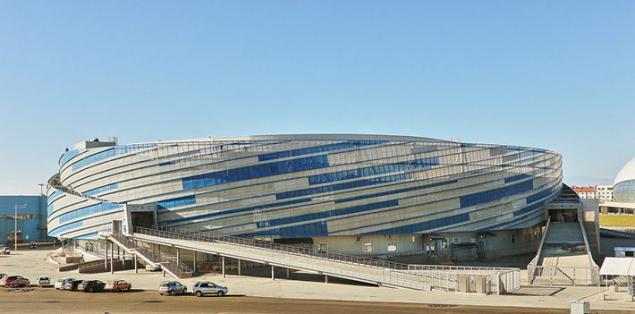
Skating Center "Adler Arena" is an oval stadium with 8 thousand. Viewers with a facade of a steel gray-white, stained stained-glass glazing. Designed by Russian specialists arena cost $ 217 million. By comparison, the entire complex "Minsk-Arena", where, in addition to the skating stadium, includes a huge sports and entertainment arena for 15 thousand. Man and Velodrome, spent $ 350 million.

After the Olympics, the building is planned to be converted to the exhibition grounds.

A separate building was built and is still exotic in Russia Curling. The four-storey complex called "Ice Cube", although, strictly speaking, to the cube curling facility did not like.
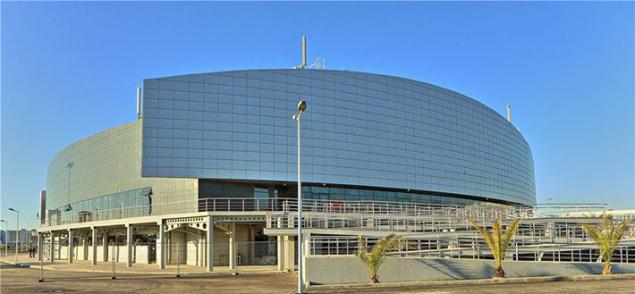
"Ice Cube" was designed as a collapsible structure, again with the idea of dismantling posleolimpiyskogo. However, in the end, this facility with a capacity of 3 thousand. Viewers and a $ 30 million decided in Sochi to leave, creating on its base Federal Center of curling.
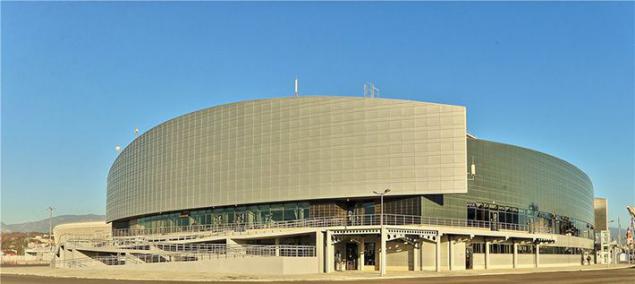
The last major sports facility of the Olympic Park - the palace of winter sports "Iceberg", which will host the figure skating and short track. Undulating facades painted in different shades of blue, must combine it with the surrounding structure mountains and the Black Sea.
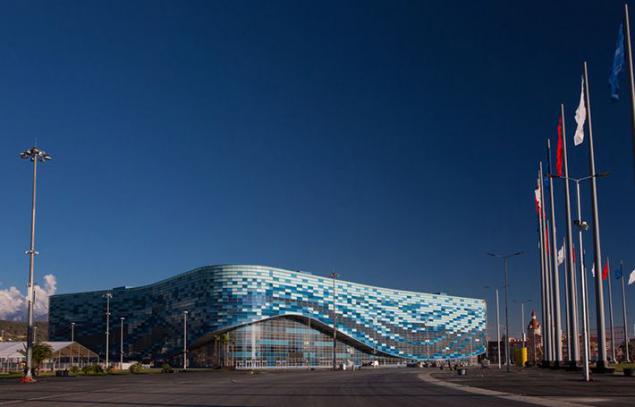
Designed by the specialists of "Mosproyekt-4" Palace for 12 thousand. Viewers worth nearly $ 300 million. In future its refurbishment as a velodrome.
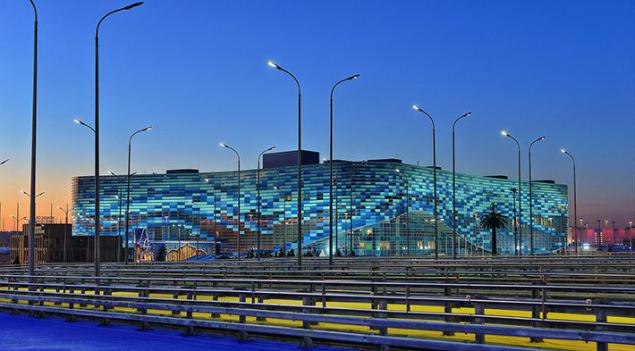
All these palaces and the arena is surrounded by a centrally located Medal Plaza, where they plan to deliver new Olympic champions of their well-deserved awards. Decorates the main ceremonial area of the fountain of the Games and the Olympic torch in the form of soaring birds.
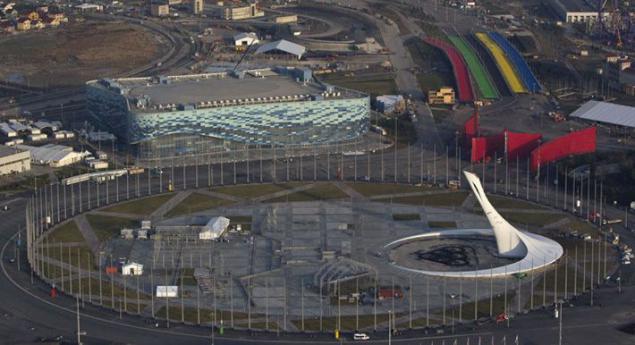
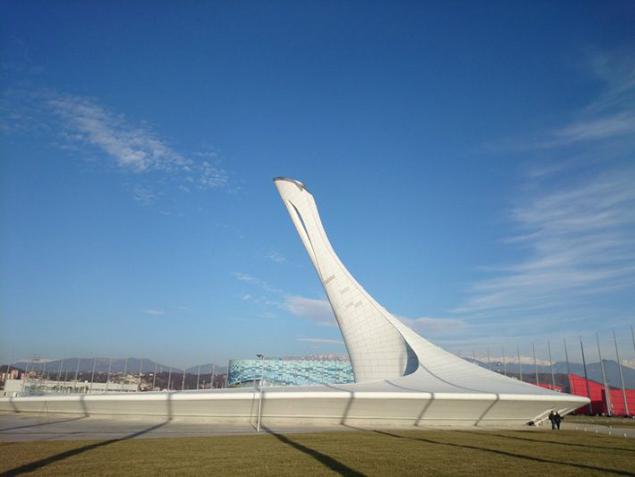
In addition to the sports facilities in the coastal cluster housed and critical infrastructure, primarily the main Olympic village - a complex of residential buildings of varied height (3 to 6 floors) in the 1364 apartments, which can accommodate 3 thousand. Man.
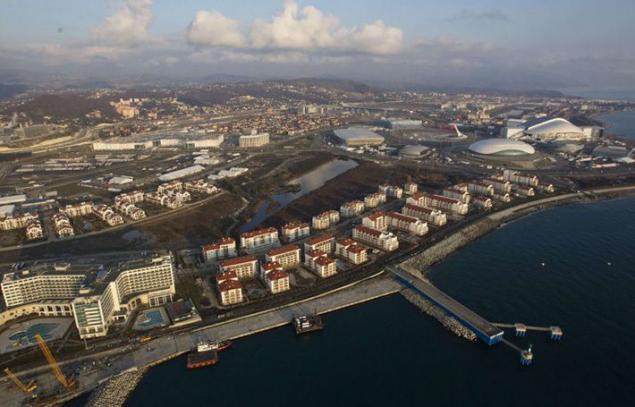
Housing estate rather modest size cost $ 735 million. In the post-Olympic period, these buildings will be converted into resorts with the necessary for living and comfortable stay social infrastructure: shops, cafes, restaurants, beauty salons, located on the first floors of houses along the main street. The sale of these apartments in a private property owner "city club Juicy" Oleg Deripaska hopes to recoup their huge investments.
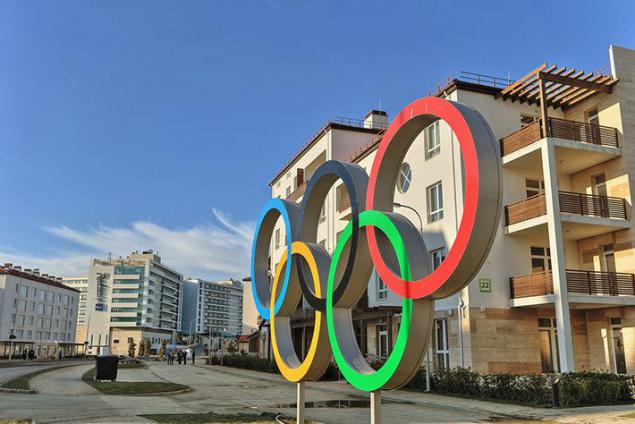
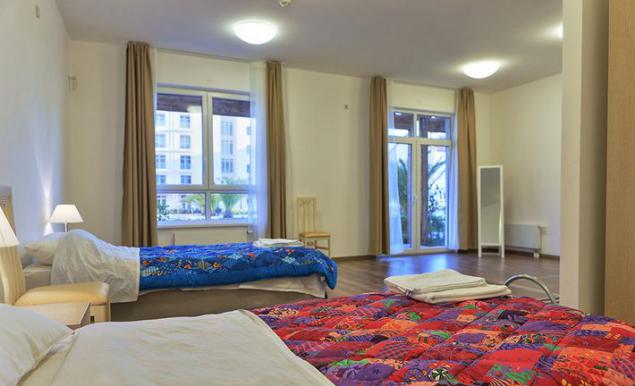
Adjacent to the hotel is the Olympic Village, built for the residence of the members of the International Olympic Committee. The 10-storey building, Radisson Blu Resort & Congress Hotel 500 rooms and the main congress center of all the Olympic Games. After graduation, the hotel will continue functioning in normal mode, a five-star resort.

The largest building throughout the Sochi Olympic Games - the main media center. His gigantic building with a total area of 160 thousand sq. M. m is designed to accommodate more than two thousand. representatives of accredited media, and more than 6 thousand. Broadcasters. The project was designed by the famous SPeeCH, Minsk working on IFC's famous Kempinski hotel on Independence Avenue at the circus. After the Games here will house retail and entertainment center.
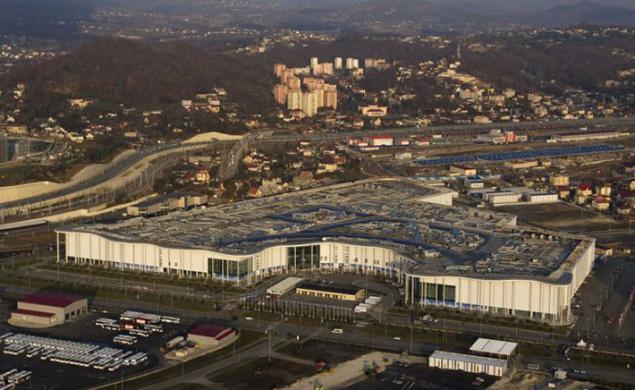
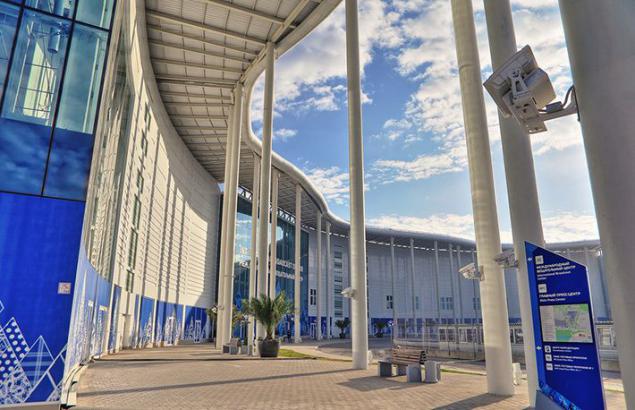
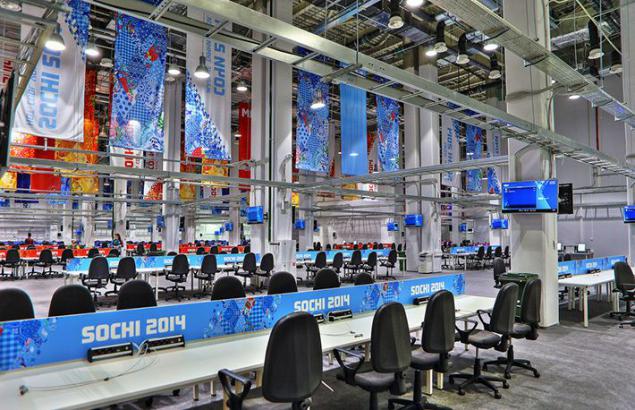
A single media center forms a complex with a hotel for the media Tulip Inn Omega. Cheerful colors of the building, however, is only designed for 600 rooms. The budget of the construction of two buildings - almost half a billion dollars. An additional $ 615 million worth "media village" - another small residential area to accommodate those journalists who are not fortunate to stay in a comfortable hotel.

A separate form the original nine-erected for the Games organizing committee. An office building, designed by the Germans of "PKB architecture + Shtetebau" - this is $ 150 million.

Amazingly, in the budget of the Winter Olympics and has been included in the construction of the Olympic Park track, "Formula 1" length of 5, 8 kilometers. Some of the buildings of the future complex (podium, paddock, race control center, and so on) are already erected, the actual route that will skirt the buildings Coastal Cluster, will be after the Games.
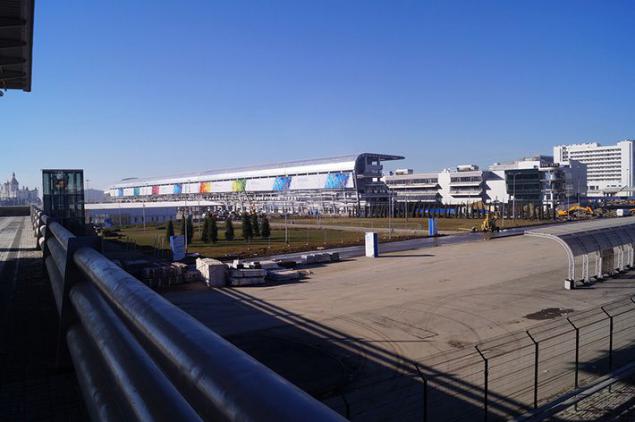


Here, in Adler, built for the Olympics and a new thermal power plant. "Gazprom" has invested in thermal power plants with installed capacity of 360 MW $ 820 million.
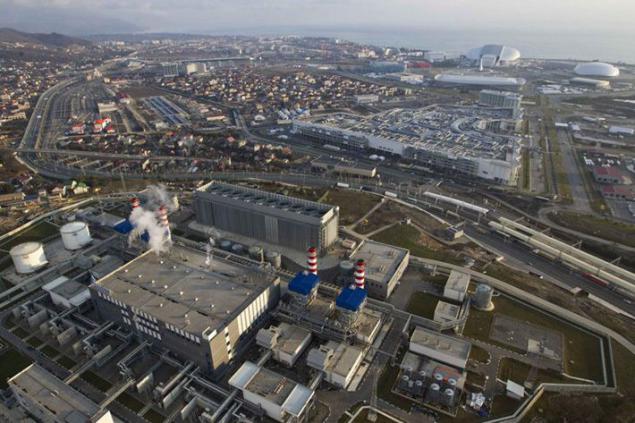
Infrastructure costs in general have made the lion's share of the "Olympic" costs. Reconstruction of the airport "Adler" - $ 690 million.
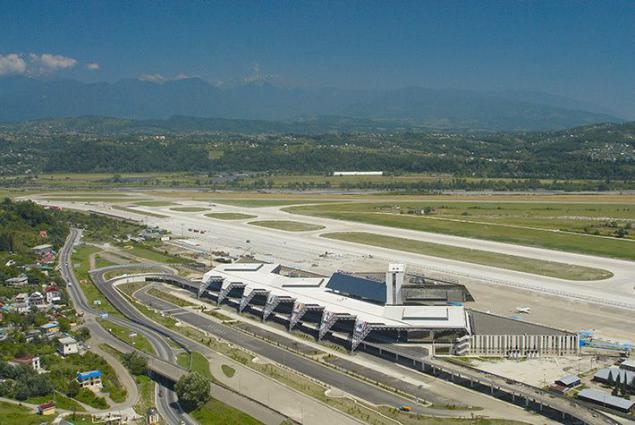
Construction understudy Holiday Avenue, the main thoroughfare of the former all-union health resort: a solution of traffic jams 17 kilometers long with bridges, flyovers and tunnels - almost $ 2, 5 billion.

In preparation for the Olympics have been reconstructed many railway stations in the city of Sochi. The modern terminal is next door to the post-war was built in Adler.
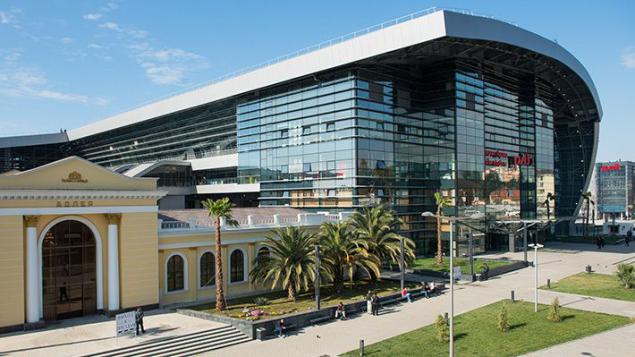
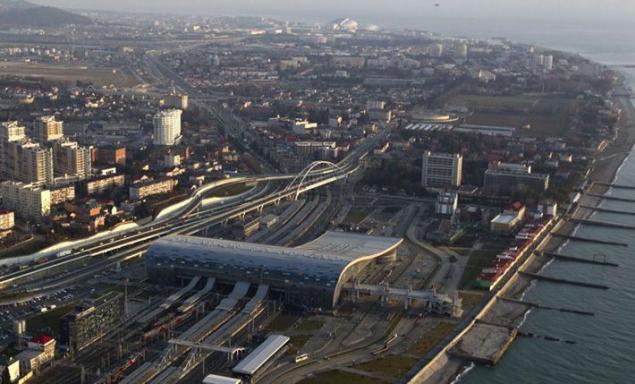
And next to the Olympic Park even built a new station of the same name, on top resembling a flying bird.
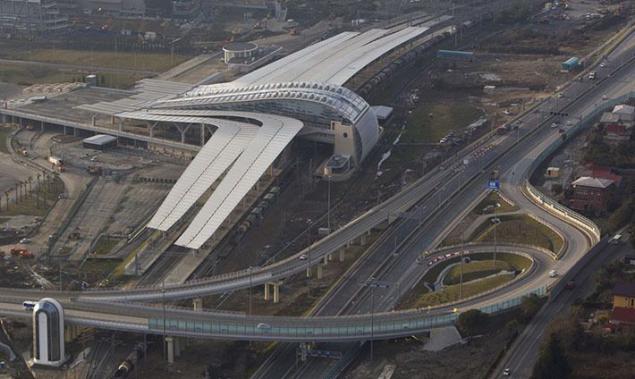
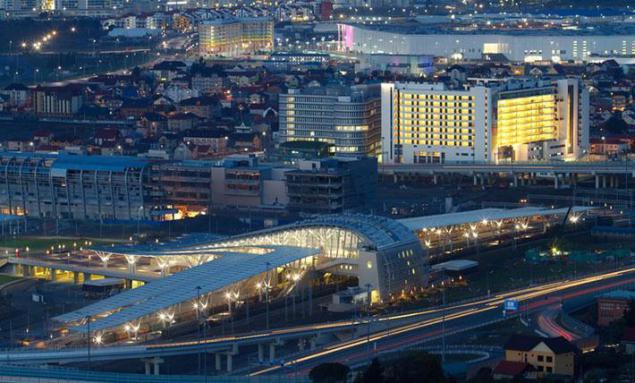
But the most expensive "Olympic" project was the construction of a combined road and railway from Adler to Krasnaya Polyana. 50-kilometer highway linking the coastal and mountain clusters cost the Russian budget in the astronomical sum of $ 8, 4 billion.
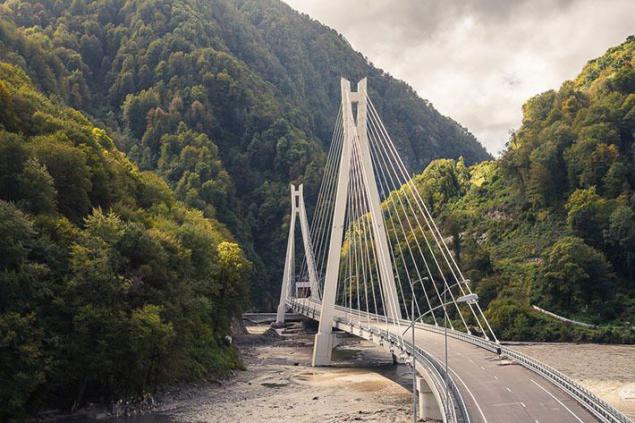
For comparison: the construction of the Qinghai-Tibet Railway in China length of 1150 kilometers, was held in difficult mountainous conditions, it costs just $ 3, 5 billion.
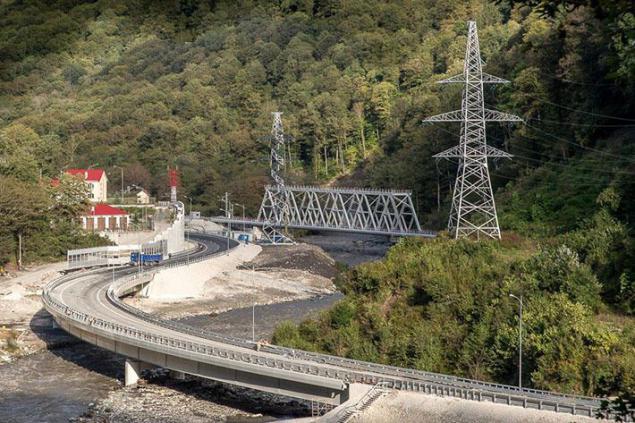
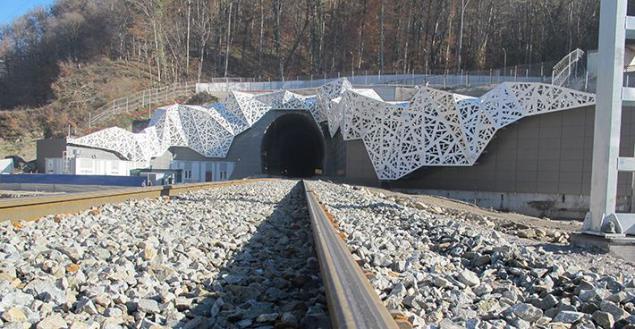
The second, smaller Olympic cluster - Mountain - created specifically for the winter sports that require open-air and steady snow cover. Near the village of Krasnaya Polyana were created facilities for biathlon and ski races, ski jumping, luge and bobsleigh, freestyle and so on.
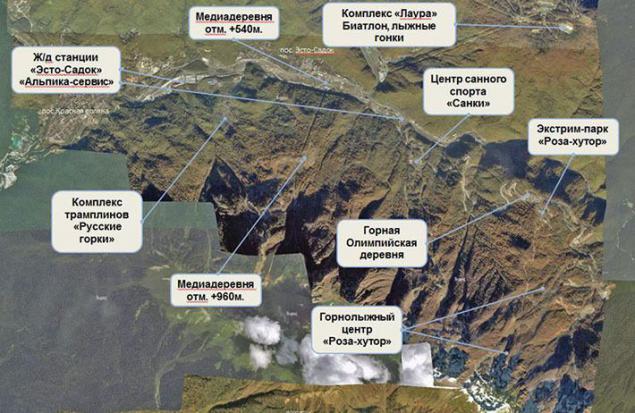
Mountain Cluster bird's-eye view.
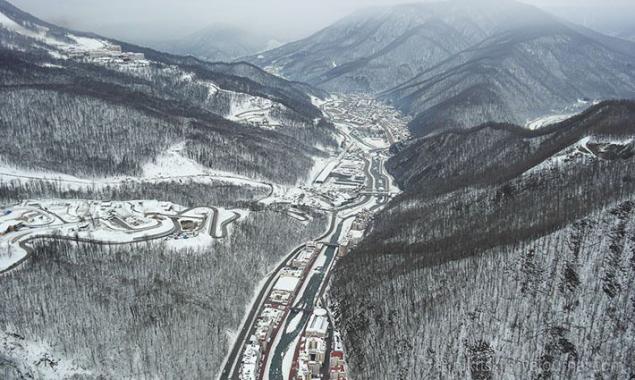
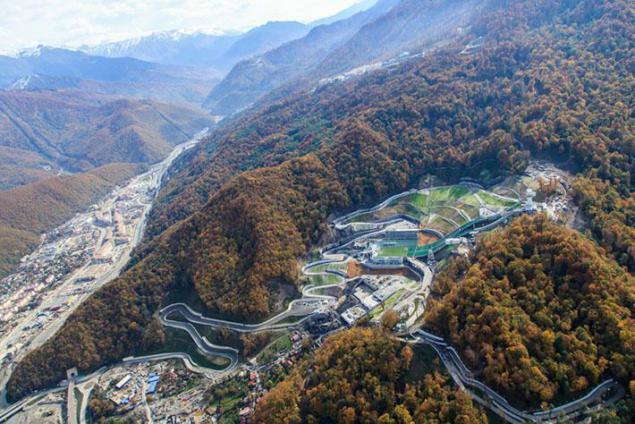
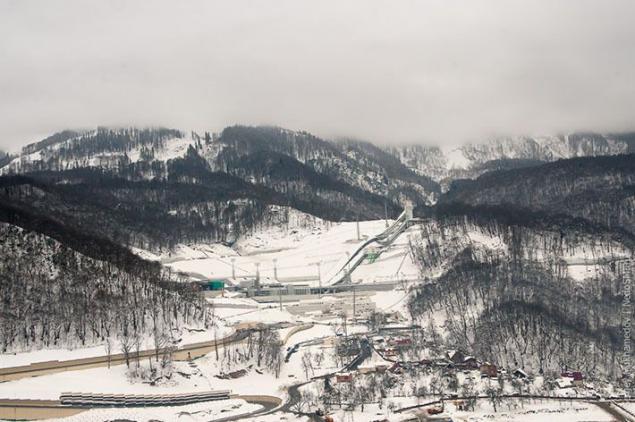
The complex "Mountain Carousel" media village with a mountain and jumps "Russian hills" - $ 2, 2 billion.
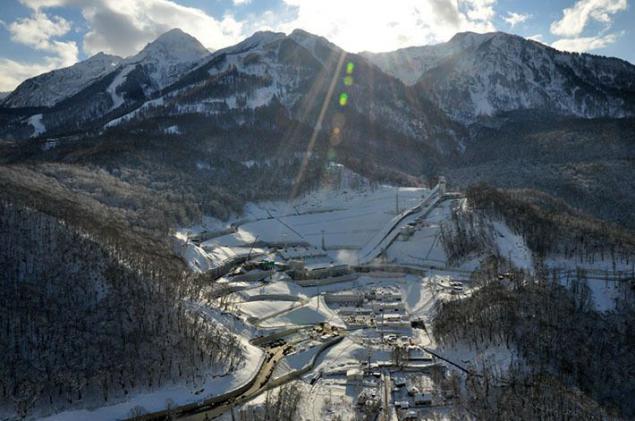


Bobsleigh track "Sledge" worth $ 232 million.
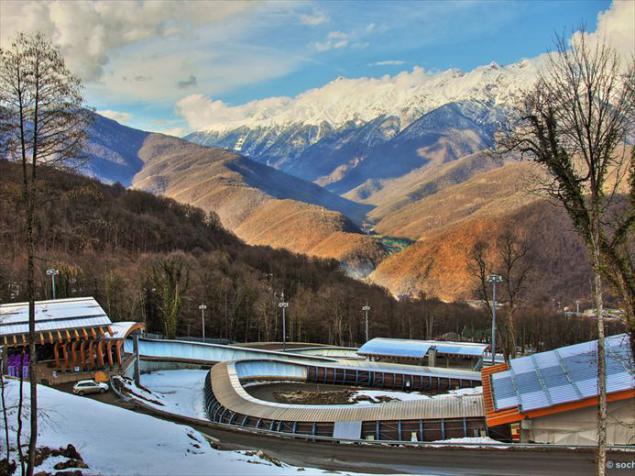
Ski and biathlon complex "Laura" cost $ 160 million.

Center "Rosa Khutor" with three Olympic Ski Sports Complex is 7, 5 thousand. Viewers, extreme park for competitions snowboarders and freestylers and the Olympic mountain village of 50 buildings 2, 6 thousand. Man - was worth $ 250 million. In the mountain valleys simultaneously with the sports facilities built new housing settlements in fact, obviously inspired by the European alpine architecture, but made modern with the inherent architecture of the post-Soviet tasteless.
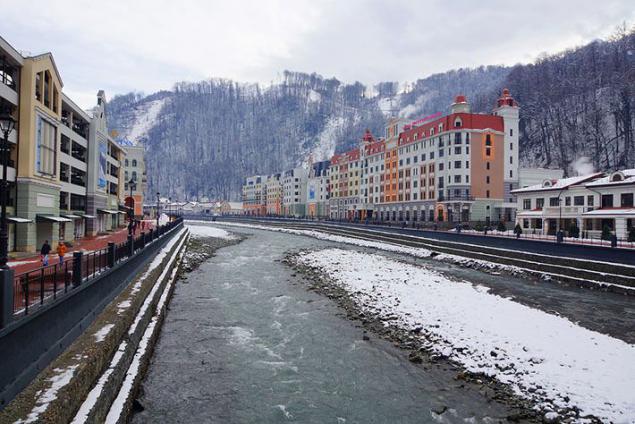
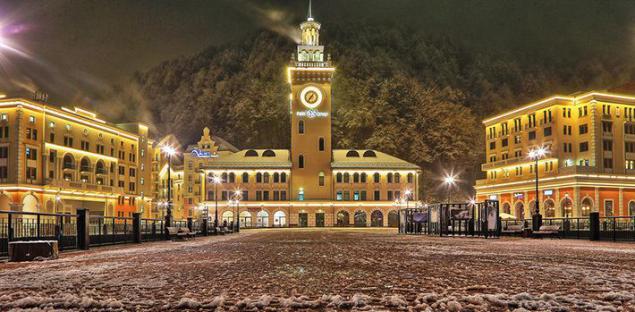

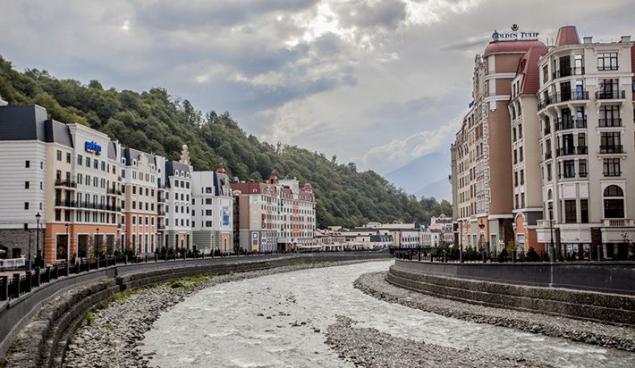
By opening a week 2014 Winter Olympics seems to be all set. Tens of billions of dollars have successfully mastered all the facilities put in time, and Sochi residents who survived the global reconstruction, will soon be able to enjoy 16 days of sporting event, during which their city is the center of attention all over the world. And I'm sure many of them will breathe a sigh of relief when the whole multi-year saga is finally over.
A source

Of the total budget of the Olympics construction costs actual Olympic venues, which, in general, in the public consciousness and become the face of the Games amounted to a relatively modest 214 billion Russian rubles (about $ 6, 3 billion). All sports and much of the infrastructure facilities are located in two so-called clusters - coastal and mountain. Coastal, as the name implies, is located on the Black Sea, in Adler, in the Imereti Valley. Until 2007, the area was occupied by private houses and fields languish tea farm "Russia».


Environmentalists opposed the construction of Olympic venues is in the area, claiming that there is a unique for the Russian region "Colchis swamps" where with great pleasure nesting rare birds, crawling Scorpion Italian, floating relic Colchis marsh turtle and happily grow such reasonably interesting plants like Osmunda regalis and Imperata cylindrica. Unfortunately, public interest turned out to be more important than the interests of the majestic relic osmunda and turtles, and in 2009, right in the swamp boiled Colchic building. So unique swamp turned into a coastal cluster.



Consider the Coastal Cluster device details. Its main element is the Olympic Park - a complex arranged in a circle with a round sports arenas area of Medal Plaza in the center. The main objects of the cluster subscribe to the figure.

Since the Olympic Park complex looks now.



Architectural symbols of the Games, according to the organizers, the Olympic Stadium became "Fischt." In addition to the function of metaphysical character, special sports load this facility shall not be - it will be used exclusively for the ceremonial opening and closing ceremonies of the Olympics. Several strange at first glance, the title is simple: Fischt - one of the mountains of the Greater Caucasus mountain range, "White head" translated from Adygei.

That mountain, according to the authors of the building of the institute "Mosproject-4" and the British bureau Populous, should resemble the silhouette of the arena that can accommodate up to 40 thousand. Viewers. Snow-white translucent polycarbonate roof characteristic form really looks like the broken mountain top.

However, realized as a result of the building to get a little less impressive than anticipated at the design stage. The stadium was covered with a roof, and its ends were unattractive outbuildings. Arena cost the Russian budget of $ 770 million - an amount many times greater than the original estimates, the money fi given exclusively ceremonial function of the stadium. However, after the Olympics, it will be transformed into a football arena and, among other things, take the game of the World Cup in 2018.

"Fischt" built on the site of the former village of Old Believers Morlinsky. The old village cemetery, became the focus of built-up area of the Olympic Park, had to save, fenced it to the games masking decorative design.

The second most important object of the Games - Grand Ice Palace - named with far less fiction - "Large". Spectacular pearl white dome, designed by Russian specialists from the NGO "Mostovik", no longer resembles the mountain, and not a drop, not the half of the egg, not the opera house in Beijing.

The roof of the "big" special mounted LEDs, allowing it to turn into a huge screen. Holds palace, where games will be played hockey tournament, 12 thousand. Viewers. After the completion of the construction of the Olympic Games, which cost about $ 300 million, will be used for its intended purpose. In the end, why not play hockey on the ice even in the subtropics.

Second ice palace of Sochi 2014 - Small - called "puck", although only vaguely similar to the puck. The oval design of the facade is lined with decorative blue-gray panels forming an abstract pattern on one side and the other spiral, which should, according to the authors of TsNIIPromzdany, reminiscent of the "blizzard." "Puck" - a rare Olympic facility, which was built by a private investor exclusively at his own expense. Perhaps, therefore, 7000th Arena cost much cheaper "big". According to various estimates, the billionaire Iskander Makhmudov and Ural Mining and Metallurgical Company spent on the construction of the stadium about $ 100 million.

Of course, the second ice arena in walking distance from the first not to put it mildly, hockey Russia does not need the city. It was originally planned that the construction will be temporary with the dismantling of the post-Olympic and transported to another location, which would wish to accept it. Surprisingly, however, it became clear that because of the design features of the dismantling of the foundation will not be possible. What will do with the "Puck" Sports Ministry of the country after the Olympics, is not yet clear.

Skating Center "Adler Arena" is an oval stadium with 8 thousand. Viewers with a facade of a steel gray-white, stained stained-glass glazing. Designed by Russian specialists arena cost $ 217 million. By comparison, the entire complex "Minsk-Arena", where, in addition to the skating stadium, includes a huge sports and entertainment arena for 15 thousand. Man and Velodrome, spent $ 350 million.

After the Olympics, the building is planned to be converted to the exhibition grounds.

A separate building was built and is still exotic in Russia Curling. The four-storey complex called "Ice Cube", although, strictly speaking, to the cube curling facility did not like.

"Ice Cube" was designed as a collapsible structure, again with the idea of dismantling posleolimpiyskogo. However, in the end, this facility with a capacity of 3 thousand. Viewers and a $ 30 million decided in Sochi to leave, creating on its base Federal Center of curling.

The last major sports facility of the Olympic Park - the palace of winter sports "Iceberg", which will host the figure skating and short track. Undulating facades painted in different shades of blue, must combine it with the surrounding structure mountains and the Black Sea.

Designed by the specialists of "Mosproyekt-4" Palace for 12 thousand. Viewers worth nearly $ 300 million. In future its refurbishment as a velodrome.

All these palaces and the arena is surrounded by a centrally located Medal Plaza, where they plan to deliver new Olympic champions of their well-deserved awards. Decorates the main ceremonial area of the fountain of the Games and the Olympic torch in the form of soaring birds.


In addition to the sports facilities in the coastal cluster housed and critical infrastructure, primarily the main Olympic village - a complex of residential buildings of varied height (3 to 6 floors) in the 1364 apartments, which can accommodate 3 thousand. Man.

Housing estate rather modest size cost $ 735 million. In the post-Olympic period, these buildings will be converted into resorts with the necessary for living and comfortable stay social infrastructure: shops, cafes, restaurants, beauty salons, located on the first floors of houses along the main street. The sale of these apartments in a private property owner "city club Juicy" Oleg Deripaska hopes to recoup their huge investments.


Adjacent to the hotel is the Olympic Village, built for the residence of the members of the International Olympic Committee. The 10-storey building, Radisson Blu Resort & Congress Hotel 500 rooms and the main congress center of all the Olympic Games. After graduation, the hotel will continue functioning in normal mode, a five-star resort.

The largest building throughout the Sochi Olympic Games - the main media center. His gigantic building with a total area of 160 thousand sq. M. m is designed to accommodate more than two thousand. representatives of accredited media, and more than 6 thousand. Broadcasters. The project was designed by the famous SPeeCH, Minsk working on IFC's famous Kempinski hotel on Independence Avenue at the circus. After the Games here will house retail and entertainment center.



A single media center forms a complex with a hotel for the media Tulip Inn Omega. Cheerful colors of the building, however, is only designed for 600 rooms. The budget of the construction of two buildings - almost half a billion dollars. An additional $ 615 million worth "media village" - another small residential area to accommodate those journalists who are not fortunate to stay in a comfortable hotel.

A separate form the original nine-erected for the Games organizing committee. An office building, designed by the Germans of "PKB architecture + Shtetebau" - this is $ 150 million.

Amazingly, in the budget of the Winter Olympics and has been included in the construction of the Olympic Park track, "Formula 1" length of 5, 8 kilometers. Some of the buildings of the future complex (podium, paddock, race control center, and so on) are already erected, the actual route that will skirt the buildings Coastal Cluster, will be after the Games.



Here, in Adler, built for the Olympics and a new thermal power plant. "Gazprom" has invested in thermal power plants with installed capacity of 360 MW $ 820 million.

Infrastructure costs in general have made the lion's share of the "Olympic" costs. Reconstruction of the airport "Adler" - $ 690 million.

Construction understudy Holiday Avenue, the main thoroughfare of the former all-union health resort: a solution of traffic jams 17 kilometers long with bridges, flyovers and tunnels - almost $ 2, 5 billion.

In preparation for the Olympics have been reconstructed many railway stations in the city of Sochi. The modern terminal is next door to the post-war was built in Adler.


And next to the Olympic Park even built a new station of the same name, on top resembling a flying bird.


But the most expensive "Olympic" project was the construction of a combined road and railway from Adler to Krasnaya Polyana. 50-kilometer highway linking the coastal and mountain clusters cost the Russian budget in the astronomical sum of $ 8, 4 billion.

For comparison: the construction of the Qinghai-Tibet Railway in China length of 1150 kilometers, was held in difficult mountainous conditions, it costs just $ 3, 5 billion.


The second, smaller Olympic cluster - Mountain - created specifically for the winter sports that require open-air and steady snow cover. Near the village of Krasnaya Polyana were created facilities for biathlon and ski races, ski jumping, luge and bobsleigh, freestyle and so on.

Mountain Cluster bird's-eye view.



The complex "Mountain Carousel" media village with a mountain and jumps "Russian hills" - $ 2, 2 billion.



Bobsleigh track "Sledge" worth $ 232 million.

Ski and biathlon complex "Laura" cost $ 160 million.

Center "Rosa Khutor" with three Olympic Ski Sports Complex is 7, 5 thousand. Viewers, extreme park for competitions snowboarders and freestylers and the Olympic mountain village of 50 buildings 2, 6 thousand. Man - was worth $ 250 million. In the mountain valleys simultaneously with the sports facilities built new housing settlements in fact, obviously inspired by the European alpine architecture, but made modern with the inherent architecture of the post-Soviet tasteless.




By opening a week 2014 Winter Olympics seems to be all set. Tens of billions of dollars have successfully mastered all the facilities put in time, and Sochi residents who survived the global reconstruction, will soon be able to enjoy 16 days of sporting event, during which their city is the center of attention all over the world. And I'm sure many of them will breathe a sigh of relief when the whole multi-year saga is finally over.
A source

